UPSC Exam > UPSC Notes > Additional Study Material for UPSC > Chapter – 1: What, Where, How and When
Chapter – 1: What, Where, How and When | Additional Study Material for UPSC PDF Download
History
History is a chronological account of events as they took place in the past.
Why should we study History?
- We should study history as it tells us about our past.
- It gives us understanding about our ancient culture and lifestyle.
- It helps us to solve the problems of the present day world.
Time frames of History

- Historians use chronological sequence for a better understanding. Birth of Jesus Christ has been taken as year zero.
- Any event before Christis called Before Christ (BC) or Before Common Era and any event after the birth of Jesusis called Anno Domini (AD) or Common Era.
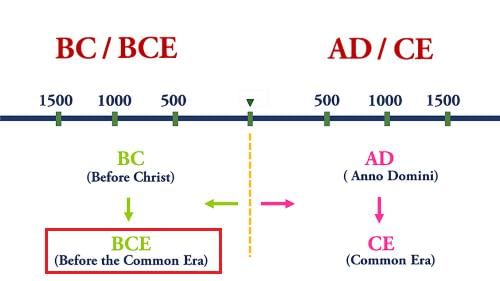
Know about the past
Know about the past
- Past tell us about people eating habits, their housing.
- Lives and occupation:
(a) Hunter
(b) Herders Musicians
(c) Farmer Artists
(d) Ruler
(c) Merchants & Scientist
Where did people live
People lived near river valleys. This was because rivers provided water for all purposes.
Traces of life were found near
(a) Narmada.
(b) Sulaiman and Kirthar hills.
(c) Garo Hills and Vindhyas.
(d) Indus and its Tributaries.
(e) Ganga and its tributaries.
(a) Narmada
- People lived near the bank of river were skilled gatherers and vast knowledge of plants.
- They collected the fruits, roots, forest products and animal hunting for food.
(b) Sulaiman and Kirthar hills in North West
- It is located in north west peninsula.
- Founded evidence of agriculture and animal domestication i.e Sheep, Goat, Cattle.
- In some are a women and men first become to grow crop such as wheat and barley about 8000 years ago (6000 BC).
(c) Garo Hills and Vindhyas
- Garo Hills located in north east and vindhya in central India.
- These were areas where agriculture developed.
- Rice was first grown to the north of vindhyas.
(d) Indus and it’s Tributaries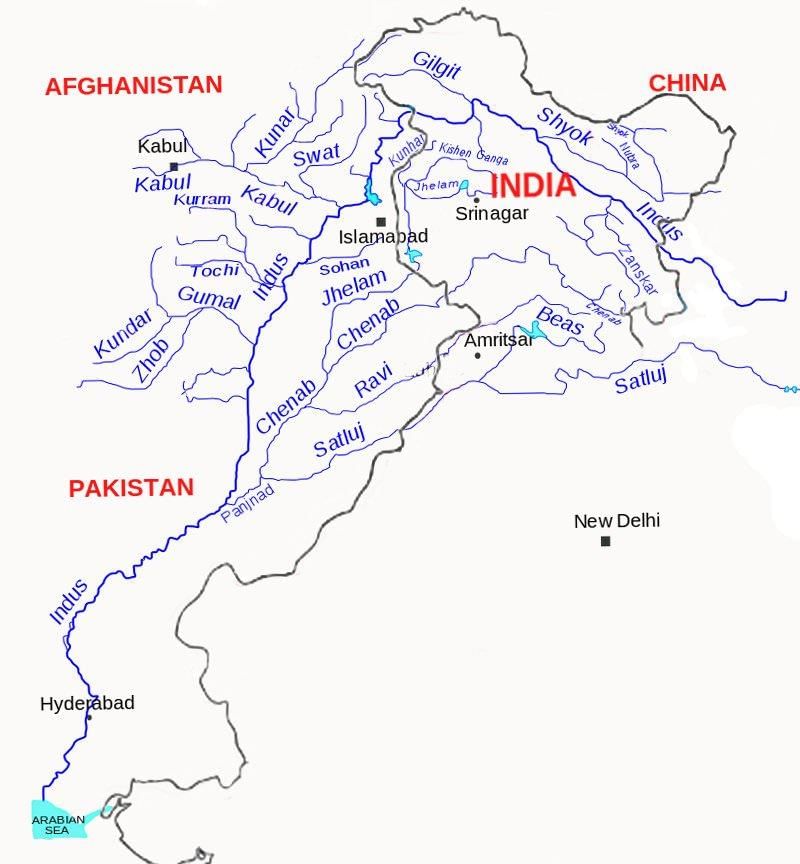 Indus and it's tributaries
Indus and it's tributaries
- Around 4700 years before, earliest civilization developed around the set tributaries.
(e) Ganga and its Tributaries
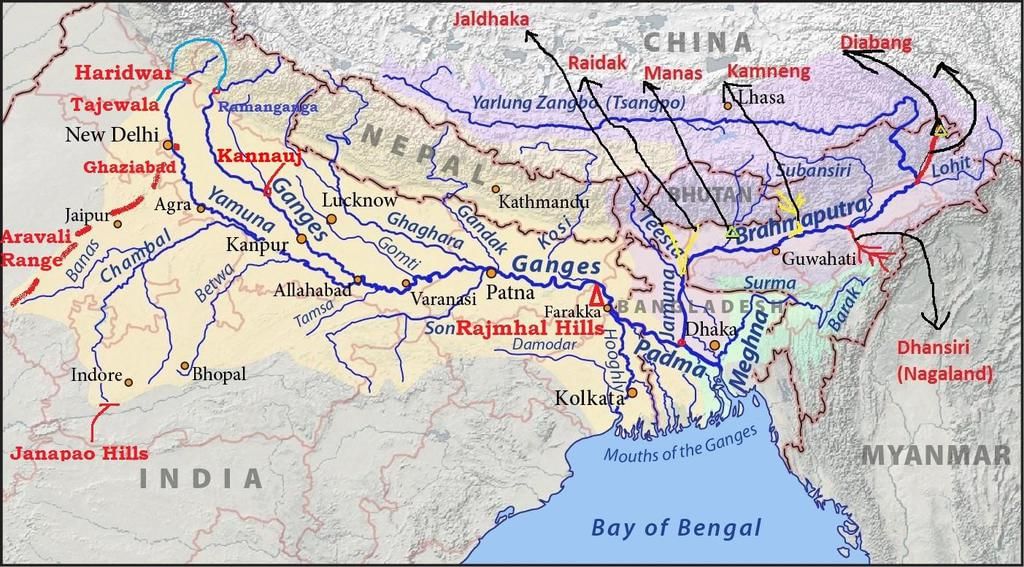 Ganga and its tributaries
Ganga and its tributaries
- Traces of life even existed along Ganga. Mahajanapadas like Magadha, Kashi, Vajji, etc. Flourished 2500 years ago
The Himalayan mountain has acted as natural barrier between India and Central Asia since ages. Many kingdoms developed in other regions. Trade and commerce, urbanization, migration, travelling started.
It leads to sharing of ideas like carving stories, composing music, cooking food because of it enriched the culture and tradition. People travelled from one to others part of the subcontinent for the purpose of
- Livelihood
- Natural Disasters
(a) Flood
(b) Drought - Merchants
(a) Caravan/Ships - Religion
- Adventures
How was the name India Derived
Name of the Land
How was the name India Derived
Name of the Land
- India
(1) The word traces its roots from the River Indus which is called in sanskrit
(2) Iranian and greece came in india 2500 year ago.They called hindos/indos representing people from land to the east of river indus. - Bharat
Bharat was used by the people of North India in the Sanskrit composition Rigveda (3500 year ago).
How do we know about the past
- There are many sources one of them are books written long ago called manuscripts.
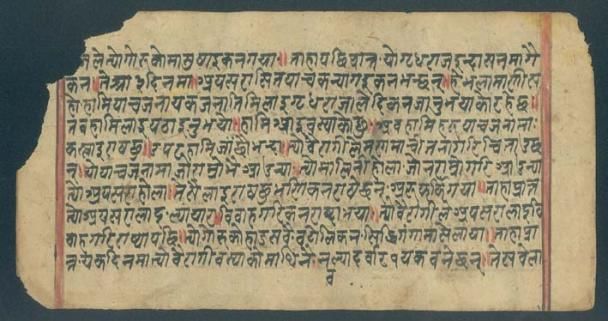 Manuscript
Manuscript - They were written by hand (manu Latin word mean hand).
- It was written on palm leaves and bark of tree i.e. Birch which grows in Himalayas.
- Many of them destroyed and insects eaten it, but some of them preserved in-
(a) Temples
(b) Monastery - It is presented in different languages
(a) Tamil
(b) Sanskrit
(c) Prakrit - Subject of writing in manuscript
(a) Religion, Belief
(b) Kings
(c) Medicines
(d) Science
(e) Epic, poem - Inscription (Epigraphy) contain both script and language. It was written on hard surface.
(a) Stone
(b) Metal Inscription over stone
Inscription over stone - Subject of writing in Inscription.
(1) King messages to the People i.e Kandahar inscription By Ashoka
(a) Two script founded
(i) Greek (Top)
(ii) Aramaic (Bottom)
(2) Recordings of king and queen life, their victories.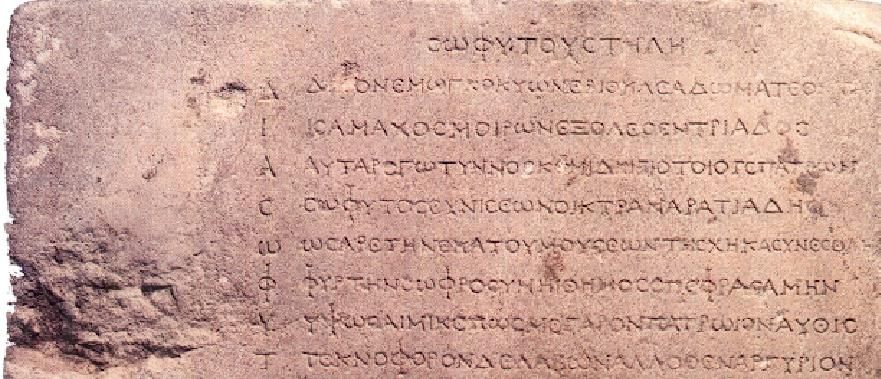 Kandahar inscription by Ashoka
Kandahar inscription by Ashoka
Why studied sources of History
- There were two groups of people who studied history.
One was called
(1) Archaeologist
(2) Historians
(a) Archaeologists studied remains of buildings made of stones, bricks, paintings and sculptures and human history through the excavation.
(i) Sources -
- Monuments
- Artefact
- Inscription
- Coins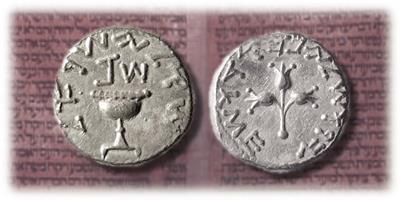 Inscription over coins
Inscription over coins - Historians were the people who studied the past and used information found in inscriptions, seals and scripts.
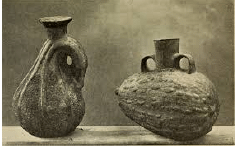 Pots(1) Pots like these were used about 4700 years ago.
Pots(1) Pots like these were used about 4700 years ago.
(2) Inscription contain script and language. Indus script
Indus script
The document Chapter – 1: What, Where, How and When | Additional Study Material for UPSC is a part of the UPSC Course Additional Study Material for UPSC.
All you need of UPSC at this link: UPSC
|
21 videos|562 docs|160 tests
|
Related Searches





















